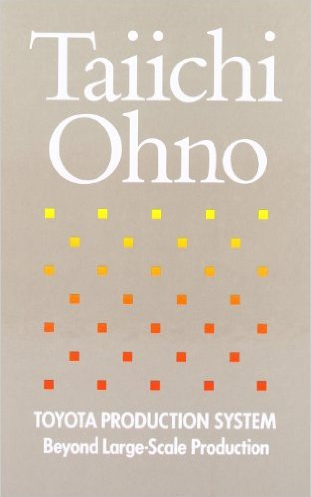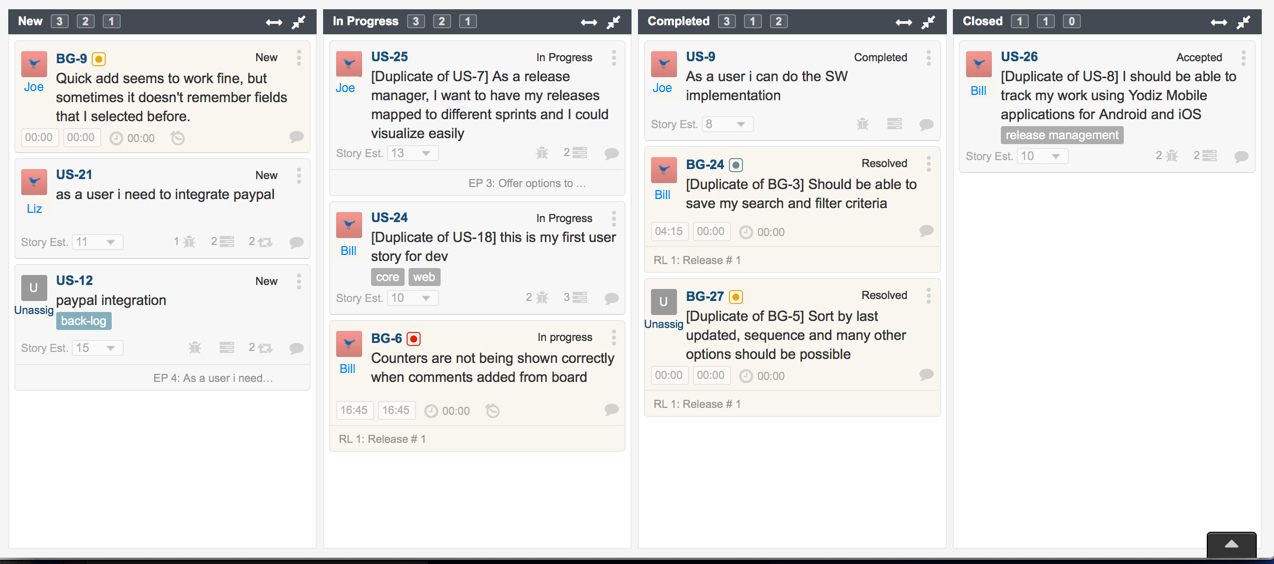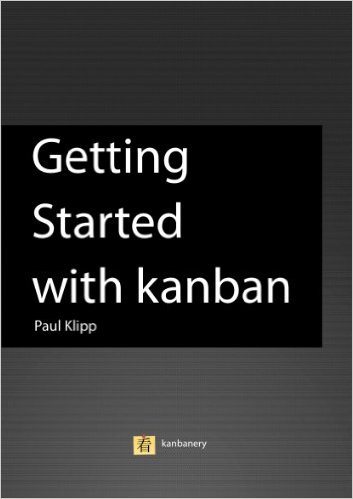1. What is Kanban System
People and organizations are often struggling to find a right balance between Scrum and Kanban to improve the work efficiency. The Question we ask more often is which agile methodology is suited best for our project. What is the best methodology to shorten the timeline and remove non-value-added waste. Scrum vs Kanban is closest you can get to achieve this.
To understand deeply the Kanban and its success, we need to understand how it was started and implemented by its creator Taiichi Ohno .
Taiichi Ohno — inventor of the Toyota Production System and Lean manufacturing — shares the genius that sets him apart as one of the most disciplined and creative thinkers of our time.
Agile, scrum or Kanban these days become a sugar coated pill, that makes the business and organization feel self-important and conscious. But in fact, the companies and organizations do, what they have always done, they just call it agile.
In order to understand why kanban is giving tremendous results today, we need to understand the overall concept without being sidetracked this individual phenomenon as “Kanban”.
2. The More the Better
Taiichi Ohno makes an insightful analogy
“We need to get rid of the idea of “the more, the better” as soon as possible.”
Tweet
Taiichi Ohno further wrote, In the today’s slow growth era, however, we must downplay the merits of mass production as soon as possible. Today, a production system aimed at increasing lot sizes is not practical. Besides creating all kinds of waste, such a production system is no longer appropriate for our needs.
Toyota Production System (TPS) is an essential part of what makes Toyota different and makes Toyota’s products a profitable investment for its customers’ businesses.
3. Change Management
When one uses a better tool, he gets wonderful results, but if one makes a mistake in using the tool. The tool bring a reverse effect.
Kanban can cause varieties of troubles if it is not used right. In order to use “kanban” correctly and skilfully, we tried to have a clear understanding of the purpose and role of the “kanban” and setup the rules using the “kanban”
Kanban becomes the self-regulating nerve of the production line. On the basis of this, workers in the production field start the work by themselves and make decisions on overtime work.
When asked, what Toyota did to get rid of all problem and improve productions.
Dr. Taiichi Ohno answer was very simple.
All we are doing is looking at the time-line, “from the moment the customer gives us an order to the point when we collet the cash. And we are reducing hat time line by removing the non-value-added wastes”
4. Zooming in — What is Kanban Board
Kanban is based on a very simple idea. Kanban is a visual control, signaling or a scheduling system to achieve just-in-time (JIT)
Just In Time (JIT) is a management system of producing only what is required, exactly when it is required and delivered exactly where it is required on time.
JIT, is very much a continuous improvement program that addresses process flow issues, significantly reducing lead time, improving quality, freeing up space and significantly reducing costs and response time to changing demands of customers.
literary translation of Kanban is a “sign card”. A card or other visual control that authorizes the production or movement of product.
A visual sign or signal that conveys a set of instructions to either withdraw parts or produce a given product is called a kanban.
5. Kanban in a Nutshell
- Limited Work In Progress (WIP). The Reason to put WIP limit in Kanban system is, if there are more items in a queue that don’t proceed, it can risk halting the whole system.
- Queuing system, nothing moves further unless an existing piece of work is delivered or pulled by a downstream function.
- The kanban produces a visual signal to indicated that new work can be pulled.
- Kanban is an approach to introduce change management to an existing software development lifecycle or project management methodology.
- The principle of Kanban is to introduce change by mapping the value stream and agreeing to WIP limits for each stage in that process.
- The main focus in kanban is to solve problems, removing waste by unblocking the item and restoring flow.
6. Kanban properties
- Visual workflow
- Pull model
- Limit work in progress
- Measure and manage flow
- Make process policies explicit
- Use models to recognize improvement opportunities
7. Principles
- Start with what you do now
- agree to pursue incremental evolutionary change
- Respect the current process roles, responsibilities and titles
- Leadership at all levels
If you interested in kanban benefits, here is our previous post
Kanban is incredibly simple and powerful. Limiting work-in-progress reveals the bottlenecks in time. Kanban system consists of a big board on the wall with physical cards placed in columns which are described as swim lanes.
Each column has a WIP (work in progress) limit, which means there can not be more then certain task in each column.
The limits are the critical difference between a kanban board and any other visual storyboard. Limiting the amount of work-in-progress (WIP) provide a smooth, continuous and optimized workflow, with carefully planned and measured work-cycle times and on-demand movement of goods, reduces the cost of wasted time, materials and capacity.
Team members can concentrate on their tasks without interruption, which leads to better quality, timely delivery, and peace-of-mind
8. Visual Kanban Board as Flow Indicator
The board below shows a situation where the WIP lanes are full, developer or tester do not take any more task until the one at hand finish completely
9. Scrum vs Kanban and More
So far your read about the origin of kanban, benefits, principles and some brief description.
We interviewed some of the best industry experts and professional and to get to know their views about Scrum vs Kanban
Let’s find out what they have to say about Kanban or Scrum based on their experience
10. Paul Klipp
“Certified Kanban Coaching Professional”
“Certified Scrum Practitioner”
“Lean-Agile Coach”
Entrepreneur author and founder of first kanban online tool
Paul Klipp is an author of the book getting started with kanban, founder of first online application kanban SW application, an active speaker in kanban and scrum events. CEO and founder of lunarlogic.io
Paul Klipp explains the strengths of both of the methodologies, he highlighted which methodology is suited for what kind of project. Bellow is the summary in his own words
Scrum tells you how to work while Kanban tells you how you’re working. by Paul Klipp
10.1 Paul Klipp explained the main difference as
The biggest between Scrum and Kanban is that one is a development framework, and the other is an improvement strategy.
10.2 From How to “vs” How you’re working
Scrum tells you how to work while Kanban tells you how you’re working.
10.3 What, When and How of project trilogy
Scrum is most useful when a new team is starting on a project. It tells them what to do, when, and how. It dictates what meetings to hold and who should attend and what they should talk about. These rules are useful for getting started. Kanban is useful once a team is working well together and wants to start experimenting with ways to improve their performance. It gives them feedback so they can try changing things and see the impact of their changes.
10.4 Kanban is also scrum
You don’t move from Scrum to Kanban. By definition, a Scrum team that starts using Kanban is still a Scrum team. They do everything the way Scrum teams should do them. They are just using Kanban to improve how they do Scrum. They only stop being a Scrum team when they decide to experiment with changing some of the Scrum rules, roles, or practices.
10.5 Advantage of Scrum
The biggest advantage of Scrum is that it works, out of the box, in most situations. If things are bad, Scrum can probably make them better. The biggest disadvantage is that some of the Scrum practices can be limiting. For example, why release an update every two weeks if the features are ready for release every day? Why talk about improvement only after each release? Why can’t a task list be changed mid-sprint? If a team is mature enough to benefit from breaking some of the Scrum practices, then Scrum can hold them back, while Kanban sets them free to experiment and learn better ways that work for them.
11. Trevor Ewen
Experienced Scrum and Kanban practitioner
Ideally, all projects are suited for either scrum or Kanban – by Trevor Ewan
Tweet
11.1 Scrum vs Kanban — similarities and Differences by “Trevor Ewan”
Based on his experience, Trevor Ewen explained the kanban similarities and differences as
In my experience, they have been very similar in goals and organization.
- Scrum is based on a stricter schedule.
- For instance, in scrum we have combed the backlog as a team, and at a certain point in the sprint.
- In Kanban, the responsibility for backlog grooming falls much more to the product owner.
11.2 What project is best suited for scrum or kanban methodology?
Ideally, all projects are suited for either scrum or Kanban. Trevor Ewen further explained as, from my experience, Kanban has been better with smaller teams and more entrepreneurial efforts.
As teams grow larger, and administration is farther away, scrum brings a better level of organization.
11.3 The benefit of moving from Scrum to Kanban or vice versa?
Never moved from one to the other in a project. I think it’s more important to choose something up front and be intentional about that choice.
11.3.1 Advantages and Disadvantages of Scrum vs Kanban ?
About strengths of both approaches “Trevor Ewen” explained as
- Kanban allows for a good infinite velocity that seems less affected by period in the scrum, day of the week, or other peoples’ vacation schedules.
- Scrum relies more on consistency in the team. As a result, it is immensely organized and collaborative.
- I will generally rely on Kanban for smaller projects and scrum for the larger ones.
12. Vinit Patel
Marketing Manger
https://www.linkedin.com/company/schoolinks
Vinit Patel is very experienced in both Scrum and kanban methodologies. However currently using Kanban in his startup. Vinit Patel shares his experience about project he managed using kanban and scrum methodologies
Kanban is more for quick turnarounds and fast-moving teams by Vinit Patel
Tweet
Similarities of Kanban vs Scrum by Vinit Patel
The similarities we found in both systems is that they allow for Sprints & Reports to keep up to date with our work.
However, in terms of the sprints: Scrum sprints are short-term (our sprints last 2 weeks) while Kanban “sprints” last until the task is complete (which can go on for months, if not pushed).
12.1 What project is suitable for kanban or scrum
- Kanban is more for quick turnarounds and fast-moving teams where as Scrum can have a larger project that may take longer.
- Kanban is a simpler option for small projects, with only a limited number of issues.
- Scrum on the other hand, will offer teams a greater organization and overview.
12.2 When asked from “Vinit Patel“ about moving scrum to/from kanban
Yes, we saw that our efficiency and productivity improved greatly by moving to Scrum. Our team is much more focused in accomplishing their tasks within each sprint. This way we are able to get more done, and move much more quickly.
Well I would say that each team should find what works best for them early one. Because moving from one methodology to another will be a very complex and time-consuming move. It all depends on the types of projects you’ll be running. Here are some pros and cons:
12.3 Pros and Cons (Scrum & Kanban)
12.3.1 Cons
Scrum: Complex, Long Set-up process
Kanban: Simple. Straightforward Set-up
12.3.2 Pros
Scrum: Lots of Functionalities, Detailed Overview (helps with large scale projects)
Kanban: Simple layout, Great for Small Scale Projects
13. You might also like
14. Over to You
We are sure you must have some good or bad experience with Scrum or Kanban , leave something from your memory in comments section bellow





